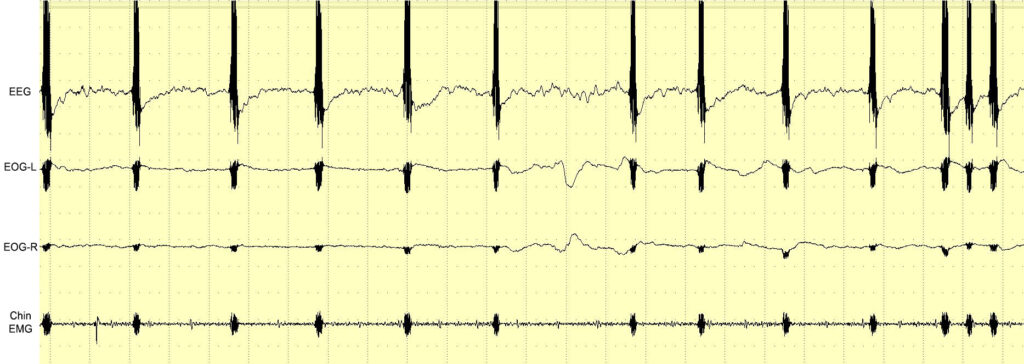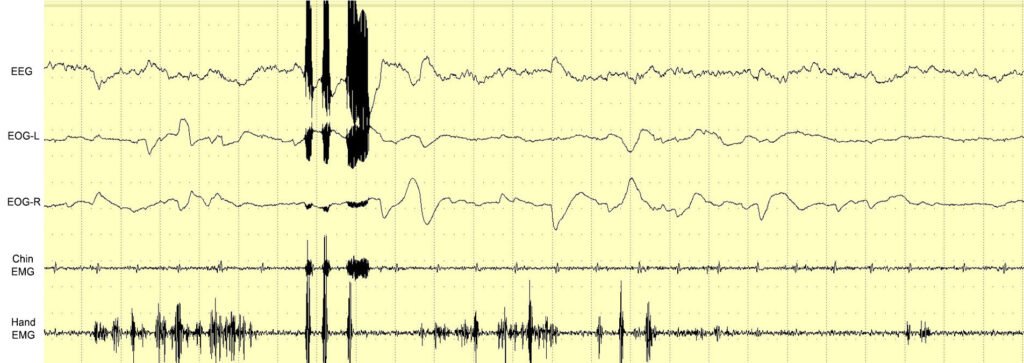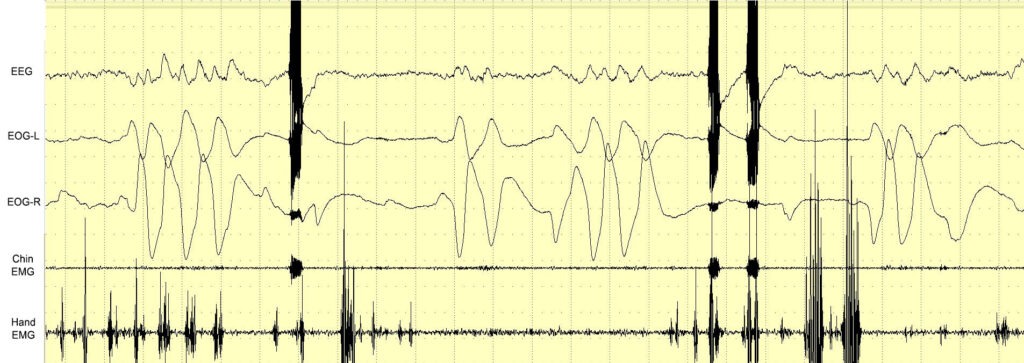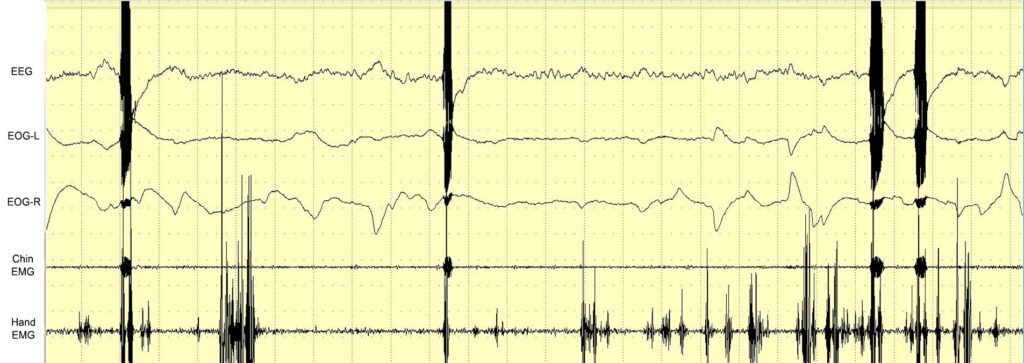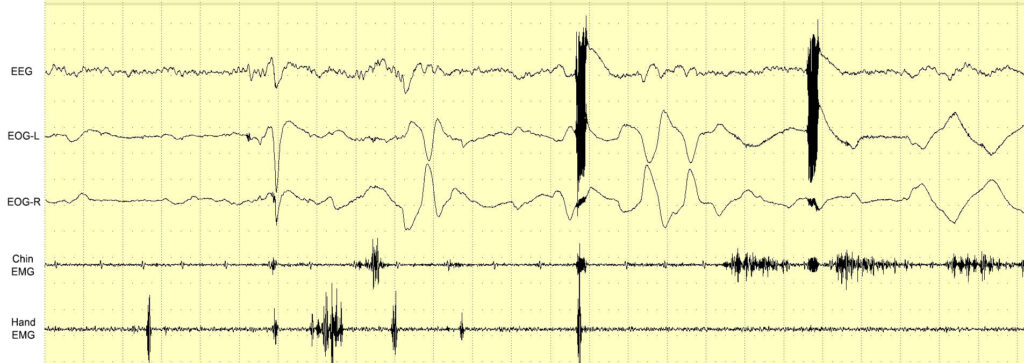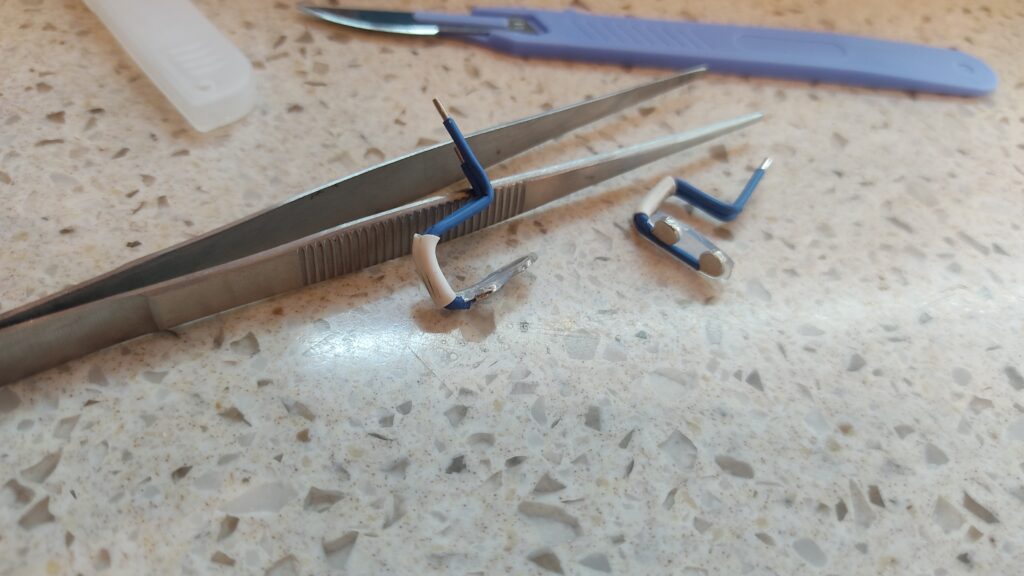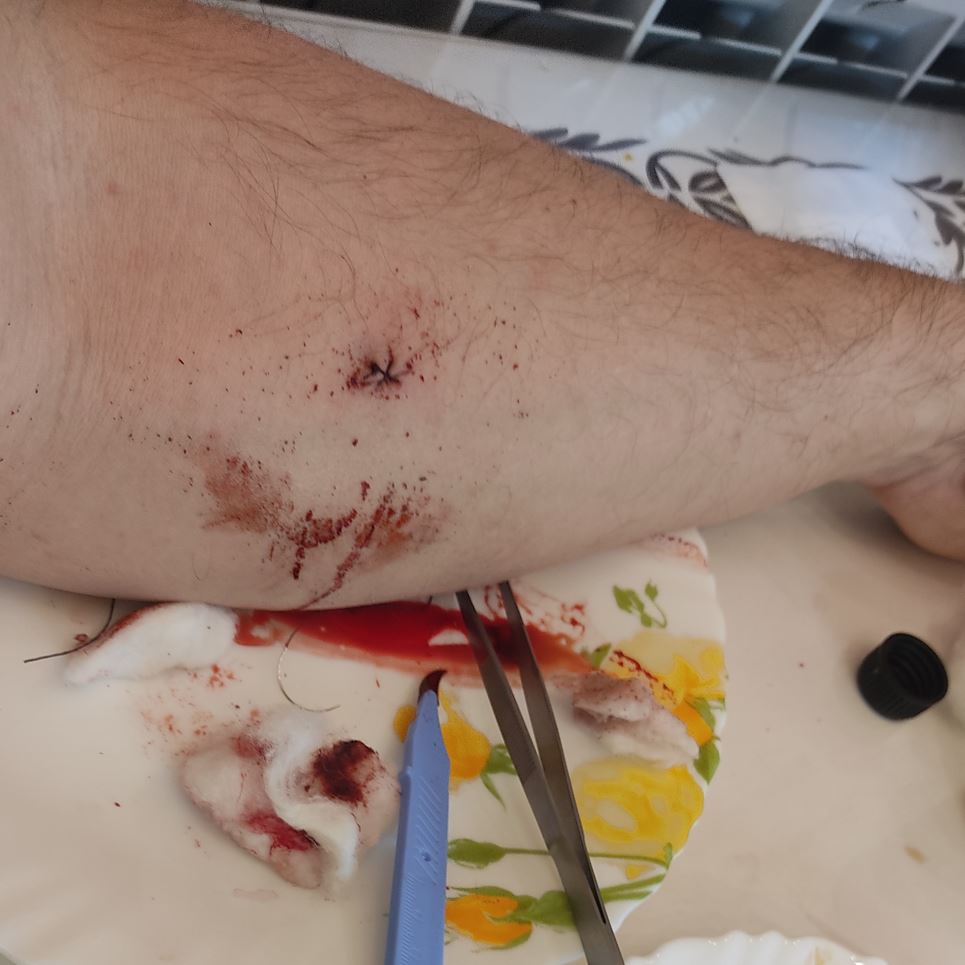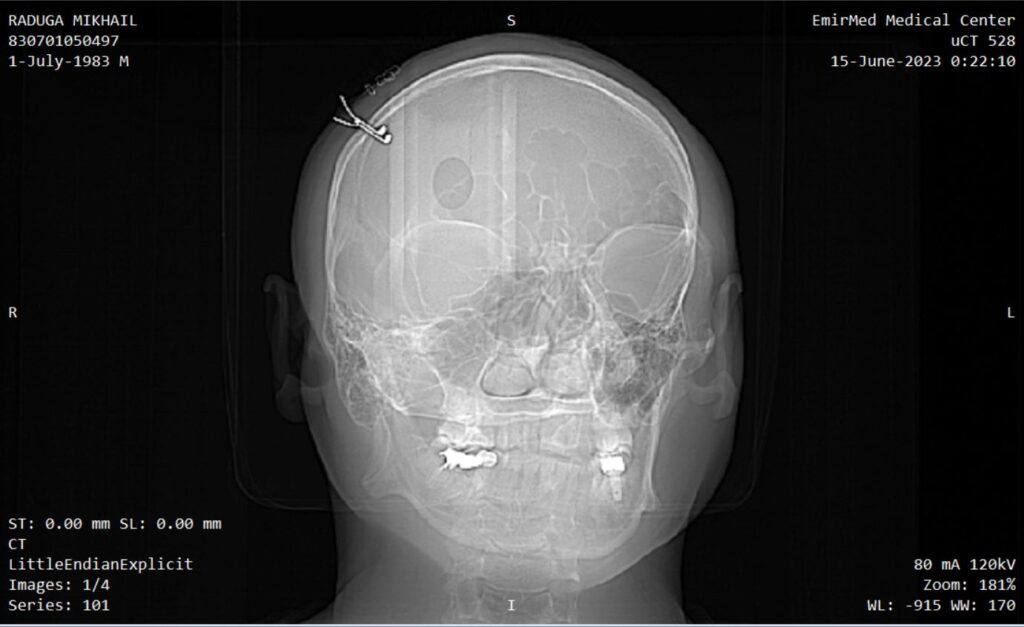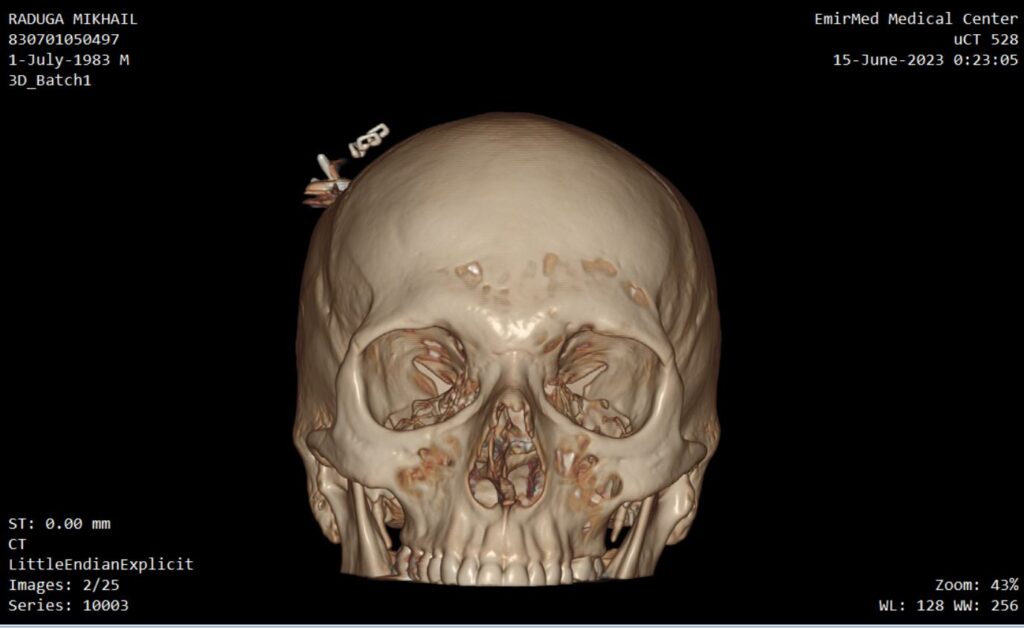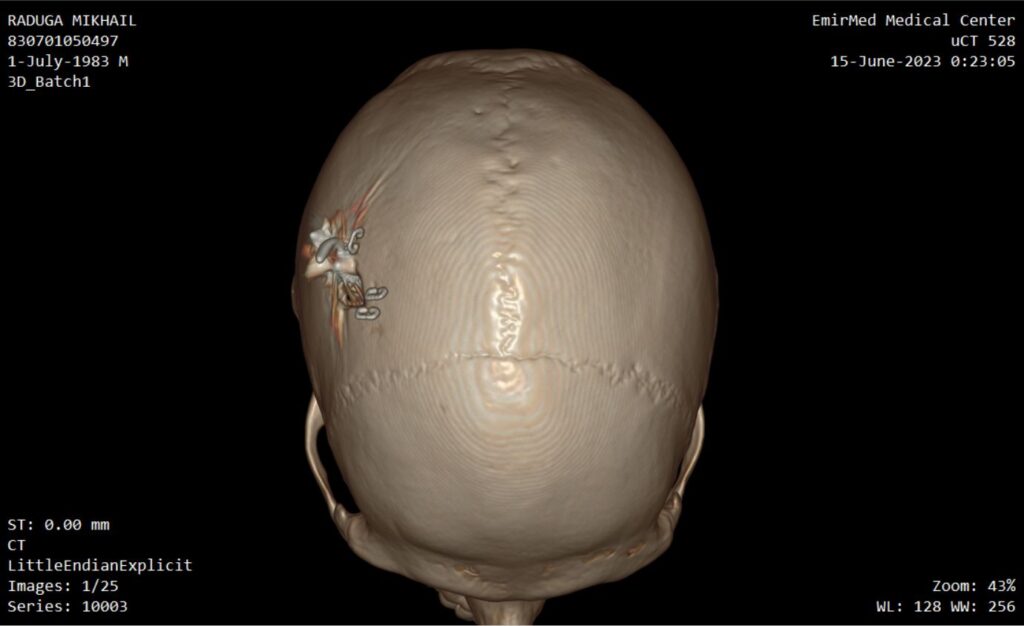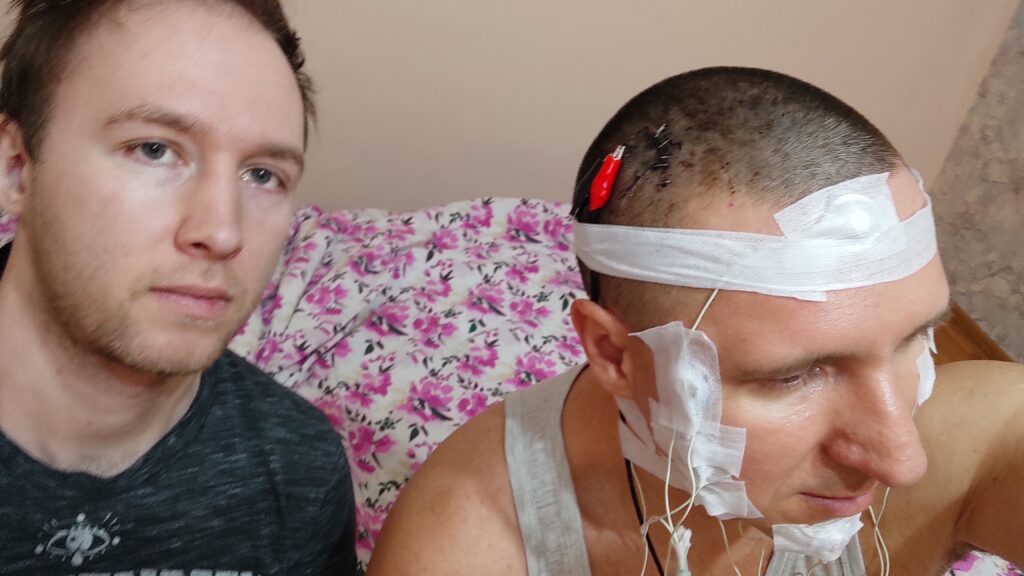As humans spend one-third of their lives asleep, many studies have explored the possibility of controlling dreams. For the first time, we tested electrical brain stimulation (EBS) of the motor cortex during REM sleep to observe how it is incorporated into dreams. Electrodes were implanted in the motor cortex of one man with the ability to induce lucid dreams (LDs). Under polysomnographic (PSG) observation, the cortex was stimulated by an alternating current during REM sleep, sleep paralysis (SP), and lucid dreams (LDs). The results show that, within a certain current range, EBS did not wake the participant. Though he could not recall specific motor stimulations in REM sleep, some irregular changes in dream plots were observed. The most interesting results were observed during an LD in which it was possible to intentionally observe an EBS-induced contraction, which interacted with a dream object. In some cases, sensory feedback from the EBS of the motor cortex was perceived when the PSG data showed REM sleep and muscle atonia. Though some of the results need further confirmation, we discuss how the obtained data could present new horizons for controlling dream scenes and inducing LDs.
Read full preprint: http://dx.doi.org/10.13140/RG.2.2.17037.10728/1
Implant
Device for electrical stimulation
Biocompatibility testing
Photos of computed tomography
Videos of computed tomography
Testing in wakefulness and in dreams
Results
